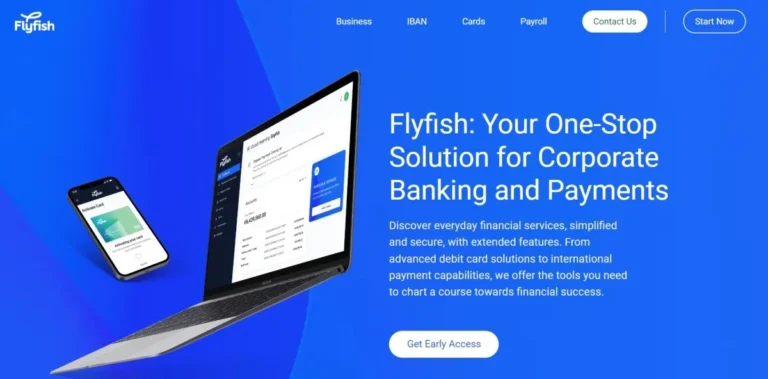Optimizing Business Processes with HubSpot QuickBooks Integration


The partnership between HubSpot and QuickBooks is revolutionising company operations management in today’s fast-paced business world. HubSpot is a top CRM and marketing automation technology, while QuickBooks is a financial management powerhouse. This comprehensive article delves into the details of HubSpot QuickBooks Integration, illuminating its advantages and disadvantages, integration structure, and accessible alternatives.
Contents
- Why Integrate HubSpot with QuickBooks?
- Why do we need to integrate HubSpot with QuickBooks?
- Common use cases of HubSpot and QuickBooks integration
- Syncing Structure for QuickBooks HubSpot Integration
- Common Limitations with QuickBooks HubSpot Integration
- Marketplace Apps for HubSpot Integration with QuickBooks
Why Integrate HubSpot with QuickBooks?
Although HubSpot is great at customer relationship management and marketing, it doesn’t have the features necessary to handle invoicing and money matters. On the other hand, QuickBooks is head and shoulders above the competition when it comes to accounting, payroll, and money management apps. In holistic work settings, where marketing and sales teams need easy access to financial data in HubSpot, the connection of these two systems becomes crucial.
Why do we need to integrate HubSpot with QuickBooks?
Collaboration between HubSpot and QuickBooks is essential for several reasons:
- Accuracy in source tracking and reporting:
- Acquiring various data points through integration allows for the creation of reports that provide value, including reports on revenue growth, invoicing and payment status, and source-based income.
- Alignment of various teams:
- Sales and finance teams are able to communicate more effectively, leading to improved alignment.
- Improved customer experience:
- HubSpot becomes the one source of truth for all sales, invoicing, and payment data, which improves customer service productivity and overall customer experience.
- Cash Flow Improvement:
- Reduces the time it takes to get from submitting a proposal to receiving payment, which improves cash flow.
- Minimal Admin Work:
- Eliminates the need to manually enter data and repair errors, making administrative work more efficient.
Common use cases of HubSpot and QuickBooks integration
Let’s delve into real-world examples and use-cases of HubSpot and QuickBooks Integration:
- Contact syncing:
- One benefit of using HubSpot with QuickBooks is the ability to sync contacts automatically, eliminating the need to manually enter data.
- While third-party applications offer two-way synchronisation between HubSpot and QuickBooks, the default connectivity between the two platforms ensures that newly created contacts are synced between the two systems.
- Product syncing:
- Coordinate products so they may be easily used in HubSpot offers.
- QuickBooks can be synced to HubSpot Product Sync with HubSpot’s default sync, and vice versa may be achieved through third-party applications.
- Invoices linking and statuses in HubSpot:
- Manually link invoices with contacts, companies, and deals in HubSpot so they may be synced with HubSpot objects.
- There is no need for human interaction to sync invoice statuses.
- Invoice Creation Within HubSpot:
- Generate invoices directly from the HubSpot interface, with all of your records immediately connected.
- To streamline the billing process, use published quotations and data already stored in HubSpot.
- Workflow automation using QuickBooks:
- Use information linked to invoices in new deal properties to trigger workflow automation.
- Set up automated email alerts, reminders, and notifications according on payment and billing statuses.
- Reporting on Financial Data:
- Build reports and dashboards using QuickBooks invoice data connected to HubSpot properties related to sources.
- Accurately monitor data to understand the return on investment (ROI) of different marketing sources.
Syncing Structure for QuickBooks HubSpot Integration
The default integration offers a structured syncing process:
- Quickbooks Contacts → HubSpot Contacts
- Quickbooks Products → HubSpot Products
- Quickbooks Invoice Data → HubSpot Deal Properties
However, for more customized options, such as treating invoices and transactions as objects associated with standard HubSpot objects, third-party integration or API usage is recommended.
Common Limitations with QuickBooks HubSpot Integration
While the integration is valuable, it comes with certain limitations:
- · Most choices only sync in one direction; two-way connections need extra technologies.
- · Only default items may be linked, limiting customisation options for bespoke objects.
- · Lack of automated matching possibilities; invoices must be manually linked to deals or contacts.
- · It’s possible that you won’t be able to sync your old contact and product data.
- · Restrictions pertaining to taxation, currency, and customer location.
Also Read: Finding the Best Free Social Media Scheduler
Marketplace Apps for HubSpot Integration with QuickBooks
Explore marketplace apps to overcome limitations:
- QuickBooks Advanced Automation:
- Offers automated invoicing connecting with contacts, deals, and companies, as well as two-way synchronisation.
- QuickBooks Desktop Sync:
- Fills in the gaps in the default connectivity between QuickBooks Desktop and HubSpot using QuickBooks Desktop Sync.
- Quote to QuickBooks:
- It can send quotes from HubSpot to QuickBooks estimates.
- IntegrateIQ:
- Provides support for HubSpot Custom Objects and two-way synchronisation.
- Third-Party Bridges:
- Common third-party bridges like Zapier, Integrately, Zoho Flow, and Integromat can connect HubSpot and QuickBooks for specific use cases.
How to Integrate and Use HubSpot with QuickBooks
Follow these steps to integrate HubSpot with QuickBooks:
- Navigate to the App Marketplace in HubSpot.
- Search for “QuickBooks Online Integration” and install the app.
- Log in to your QuickBooks account.
- Customize the integration settings for contact and product syncing.
- Enable contact sync and product sync for seamless data flow.
Conclusion
Integrating HubSpot with QuickBooks provides a unified picture of client interactions across sales, marketing, and finance. Although there are certain limits, the partnership is still improving and should be more reliable and robust in the future. In 2023 and beyond, businesses may achieve operational excellence by streamlining operations and improving client experiences through this connection.
Also Read: 5 Smart Ways To Earn Money Online




